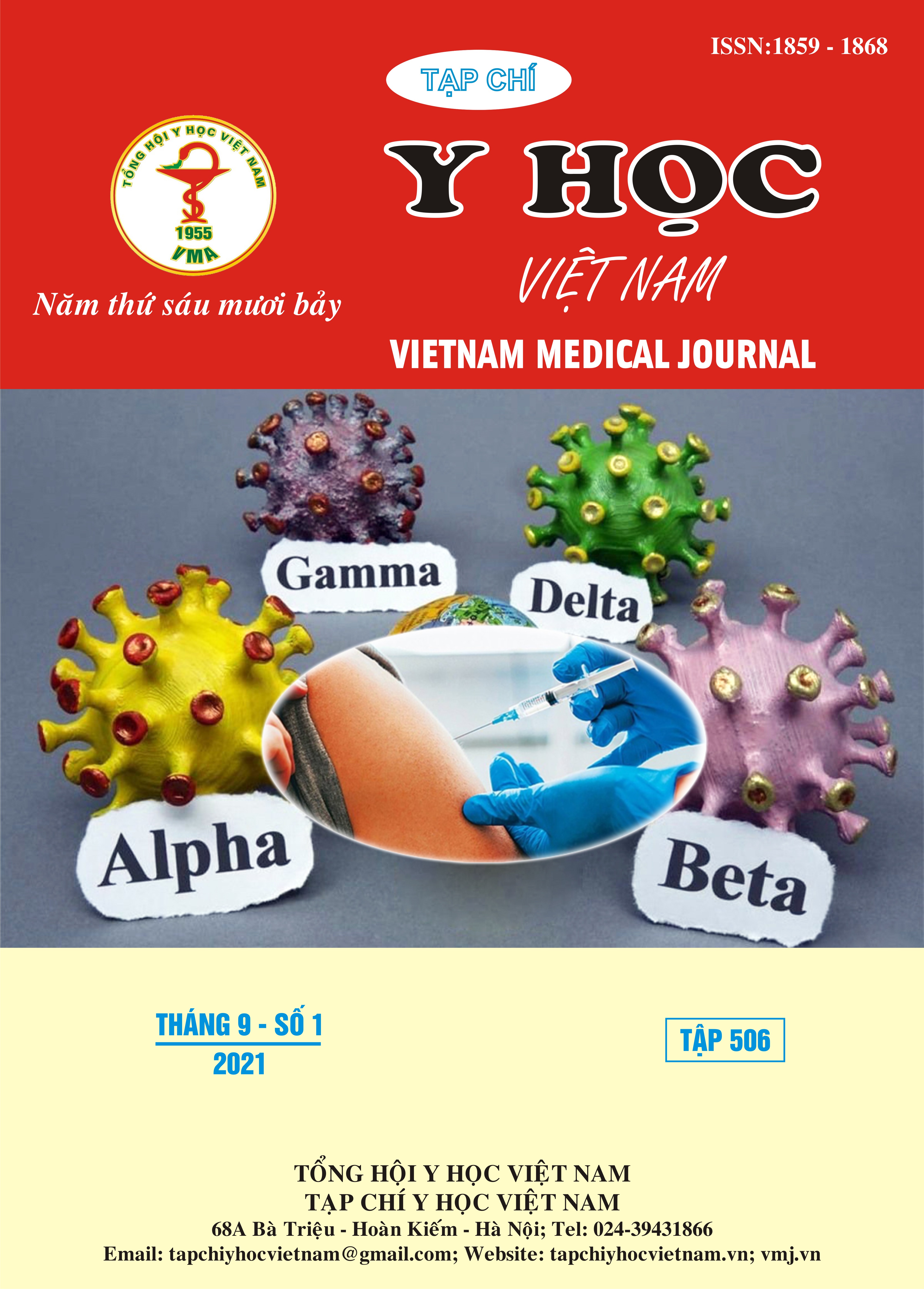STUDY ON VALUE OF VIRTUAL MAGNIFYING CHROMOENDOSCOPY WITH (FICE) AND MAGNIFYING CHROMOENDOSCOPY WITH CRYSTAL VIOLET IN PREDICTING HISTOPATHOLOGY OF COLORECTAL POLYP
Main Article Content
Abstract
Colonoscopy is the best method for detecting and treating polyps, helping to reduce the incidence of colorectal cancer by 76-90%. However, white light endoscopy is limited in accurately predicting polyp histopathology. The image-enhanced endoscopy techniques have been developed to help visualize the mucosal surface and submucosal vascular structures in more detail, thereby accurately predicting polyp histopathology results, supporting accurate treatment. Objective: This study compared the images of virtual magnifying chromoendoscopy with FICE, based-staining magnifying chromoendoscopy with Crystal violet with colorectal polyps histopathology. Methods: A descriptive study, evaluating diagnostic tests on a total of 332 polyps of 266 patients was endoscopically or surgically resected from 06/2016 to 09/2019. After identified by white light endoscopy, polyps continued to be evaluated by virtual magnifying chromoendoscopy (x50-150 times) with FICE. The capillary pattern was divided into 5 subtypes according to the number, morphology, and distribution of the fine blood vessels according to Teixeira classification). Then, polyps were stained in order to with Crystal violet 0.05% (according to Kudo classification for morphological characteristics of pit pattern). Finally, polyps were resected by endoscopy or surgery, biopsy and compared with histopathological results (neoplastic/non-neoplastic polyp). Results: The number of neoplastic polyps was 278/332 with 231 adenoma polyps and 47 carcinoma polyps. Magnifying chromoendoscopy has high sensitivity and accuracy when compared with the histopathological results of colorectal polyps. The sensitivity, specificity, and accuracy of magnifying chromoendoscopy with Crystal violet (97.2%, 72.2%, 93.0%); and with FICE (92,1%, 68,5%, 88,3%). 24/332 polyps were classified as Kudo type Vi, of which 50% (12/24) histopathological results were intramucosal carcinoma, 20.8% (5/24) had histopathological results as submucosal carcinoma . 23/332 polyps classified as Kudo type Vn all had histopathological results as cancer, of which 78.3% (18/23) were submucosal carcinoma, 21.7% (5/23) were intramucosal carcinoma. Conclusions: The magnifying chromoendoscopy with FICE, Crystal violet is good to predict histopathological results of colorectal polyp.
Article Details
Keywords
magnifying chromoendoscopy, colorectal polyps, Flexible spectral imaging color enhancement (FICE), Crystal violet
References
2. Shussman N, Wexner S.D (2014). Colorectal polyps and polyposis syndromes. Gastroenterol Rep (Oxf), 2(1), 1-15.
3. Silva S.M, Rosa V.F, dos Santos Acn et al (2014). Influence of patient age and colorectal polyp size on histopathology. Arq Bras Cir Dig, 27(2), 109-113.
4. Teixeira C.R, Torresini R.S, Canali C et al (2009). Endoscopic classification of the capillary-vessel pattern of colorectal lesions by spectral estimation technology and magnifying zoom imaging. Gastrointest Endosc, 69(3 Pt 2), 750-756.
5. Kobayashi Y, Kudo S.E, Miyachi H et al (2011). Clinical usefulness of pit patterns for detecting colonic lesions requiring surgical treatment. Int J Colorectal Dis, 26(12), 1531-1540.
6. Longcroft-Wheaton G.R, Higgins B, Bhandari P (2011). Flexible spectral imaging color enhancement and indigo carmine in neoplasia diagnosis during colonoscopy: a large prospective UK series. Eur J Gastroenterol Hepatol, 23(10), 903-911.
7. Matsuda T, Fujii T, Saito Y et al (2008). Efficacy of the invasive/non-invasive pattern by magnifying chromoendoscopy to estimate the depth of invasion of early colorectal neoplasms. Am J Gastroenterol, 103(11), 2700-2706.
8. Iwatate M, Ikumoto T, Sano Y et al (2011). Diagnosis of neoplastic and non-neoplastic lesions and prediction of submucosal invasion of early cancer during colonoscopy. Revista Colombiana de Gastroenterologia, 26, 43-57.


